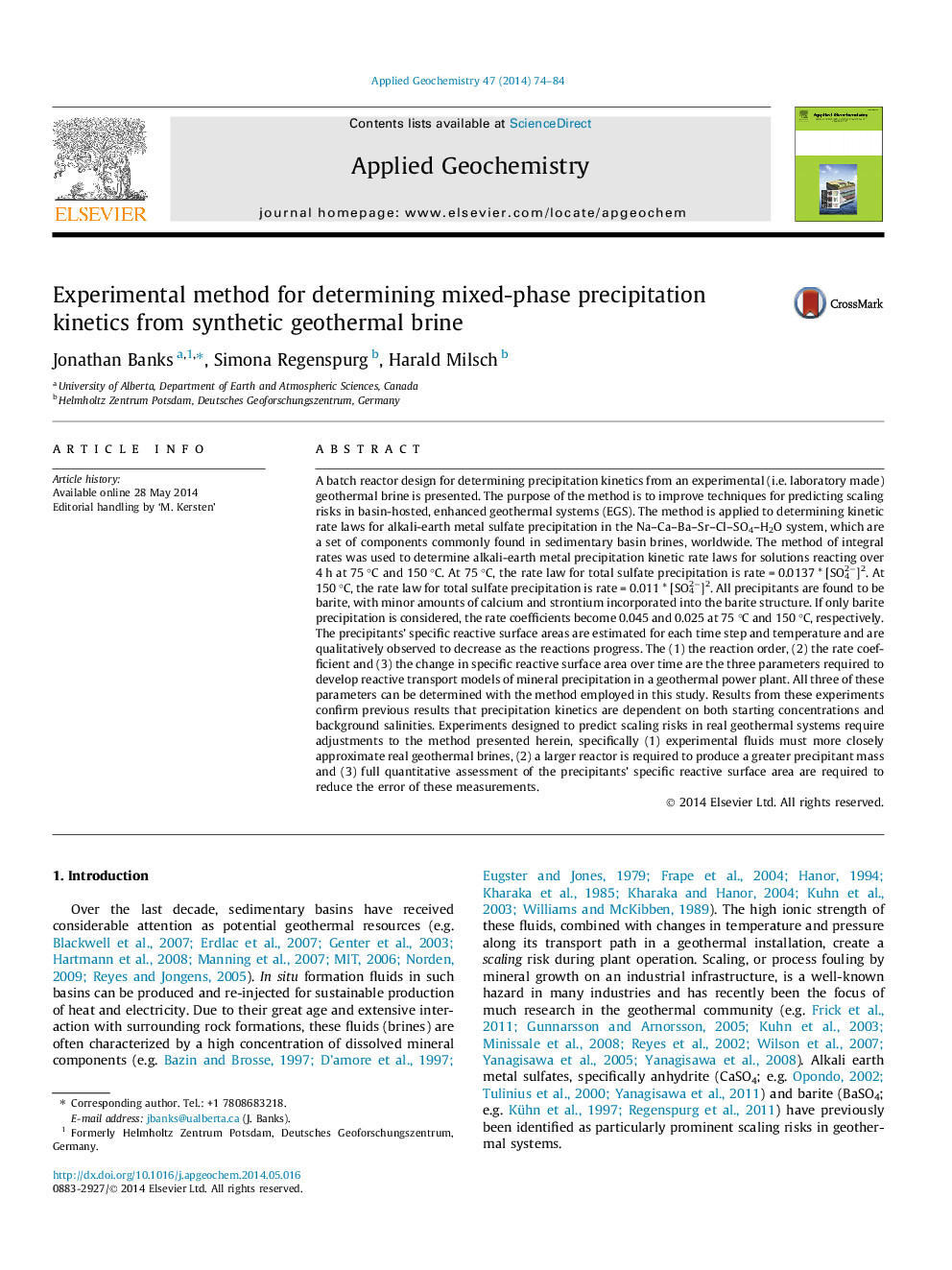| کد مقاله | کد نشریه | سال انتشار | مقاله انگلیسی | نسخه تمام متن |
|---|---|---|---|---|
| 4435740 | 1620244 | 2014 | 11 صفحه PDF | دانلود رایگان |
• Sulfate precipitation rates are studied in a saline solution at 75 °C and 150 °C.
• Strontium and calcium bearing barite precipitates at both temperatures.
• Precipitation proceeds faster at the lower temperature.
• More calcium and strontium are in the barite crystals at higher temperatures.
• Crystal growth proceeds according the Ostwald ripening model.
A batch reactor design for determining precipitation kinetics from an experimental (i.e. laboratory made) geothermal brine is presented. The purpose of the method is to improve techniques for predicting scaling risks in basin-hosted, enhanced geothermal systems (EGS). The method is applied to determining kinetic rate laws for alkali-earth metal sulfate precipitation in the Na–Ca–Ba–Sr–Cl–SO4–H2O system, which are a set of components commonly found in sedimentary basin brines, worldwide. The method of integral rates was used to determine alkali-earth metal precipitation kinetic rate laws for solutions reacting over 4 h at 75 °C and 150 °C. At 75 °C, the rate law for total sulfate precipitation is rate = 0.0137 * [SO42−]2. At 150 °C, the rate law for total sulfate precipitation is rate = 0.011 * [SO42−]2. All precipitants are found to be barite, with minor amounts of calcium and strontium incorporated into the barite structure. If only barite precipitation is considered, the rate coefficients become 0.045 and 0.025 at 75 °C and 150 °C, respectively. The precipitants’ specific reactive surface areas are estimated for each time step and temperature and are qualitatively observed to decrease as the reactions progress. The (1) the reaction order, (2) the rate coefficient and (3) the change in specific reactive surface area over time are the three parameters required to develop reactive transport models of mineral precipitation in a geothermal power plant. All three of these parameters can be determined with the method employed in this study. Results from these experiments confirm previous results that precipitation kinetics are dependent on both starting concentrations and background salinities. Experiments designed to predict scaling risks in real geothermal systems require adjustments to the method presented herein, specifically (1) experimental fluids must more closely approximate real geothermal brines, (2) a larger reactor is required to produce a greater precipitant mass and (3) full quantitative assessment of the precipitants’ specific reactive surface area are required to reduce the error of these measurements.
Journal: Applied Geochemistry - Volume 47, August 2014, Pages 74–84
